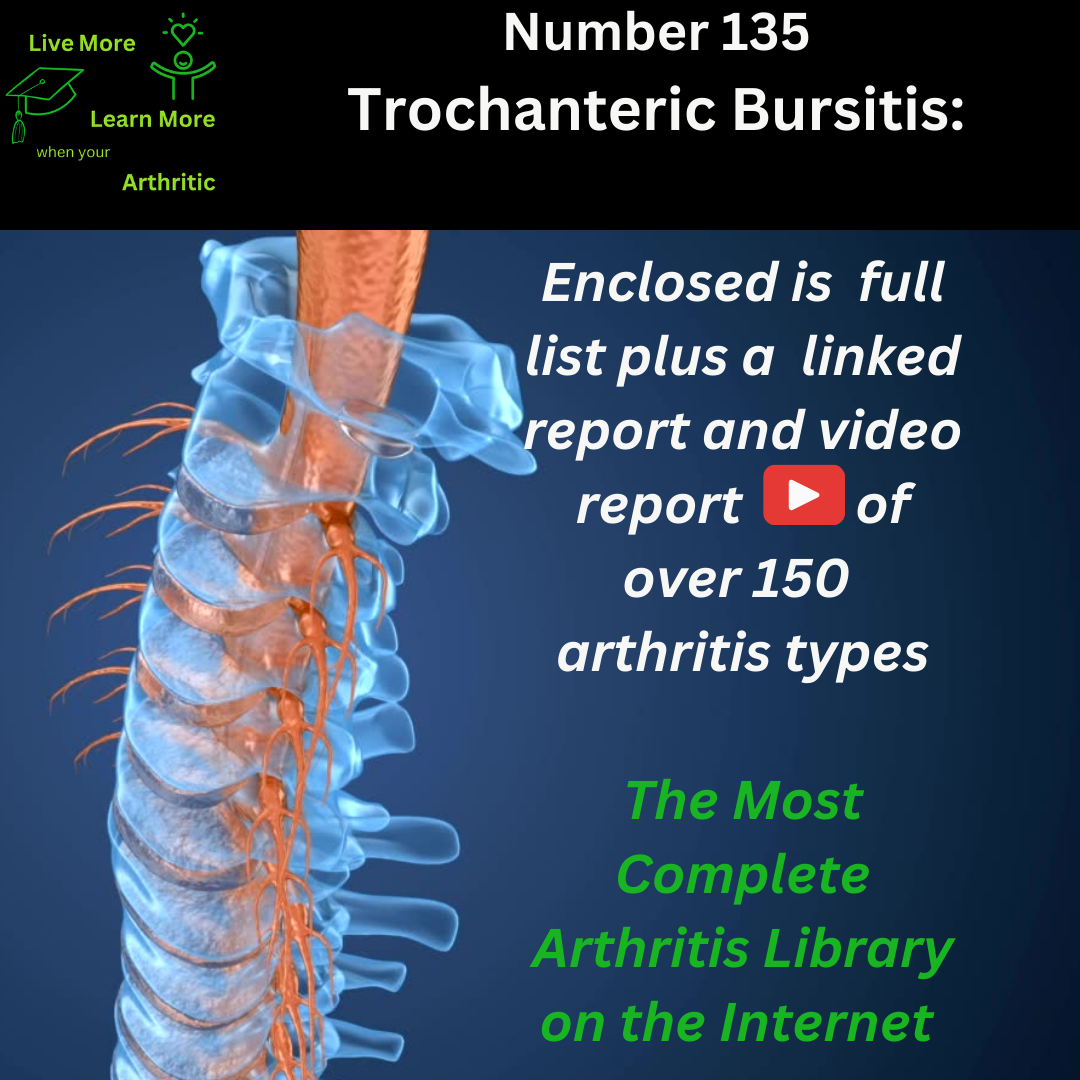
Trochanteric Bursitis: Number 135 of around 150 types of Arthritis
Understanding Trochanteric Bursitis
Trochanteric bursitis is a condition that affects the bursa located near the greater trochanter of the femur, causing pain and discomfort in the hip region. Let’s explore this condition, its symptoms, causes, and proactive strategies for achieving a higher quality of life.
 Most Affected Parts of the Body
Most Affected Parts of the Body
Trochanteric bursitis primarily affects the hip joint, specifically the bursa located over the greater trochanter of the femur. The bursa acts as a cushion between the bone and surrounding soft tissues.
Description of the Disease
Trochanteric bursitis involves inflammation of the bursa, which can occur due to repetitive movements, overuse, trauma, or underlying conditions like osteoarthritis. Inflammation leads to pain, swelling, and tenderness in the hip area.
Causes and Triggers
The main causes and triggers of trochanteric bursitis include:
- Repetitive activities that strain the hip joint, such as running or climbing stairs
- Trauma or direct injury to the hip area
- Muscle imbalances or weakness around the hip joint
- Conditions like osteoarthritis or rheumatoid arthritis that affect joint health
Symptoms and Limited Range of Motion
Symptoms of trochanteric bursitis include:
- Pain on the outside of the hip that may radiate down the thigh
- Tenderness and swelling over the greater trochanter
- Pain worsened by activities such as walking, climbing stairs, or lying on the affected side
- Limited range of motion and stiffness in the hip joint
Common Ages of Onset and Risk Factors
Trochanteric bursitis can occur at any age but is more common in middle-aged and older adults. Women are more frequently affected than men, possibly due to differences in hip anatomy and hormonal factors.
Complications and Prognosis
Complications of trochanteric bursitis may include:
- Chronic pain and discomfort affecting daily activities
- Impact on mobility and quality of life
- Recurrent episodes of inflammation and pain
Proactive Approach for Quality of Life
Achieving a higher quality of life with trochanteric bursitis involves:
- Resting and avoiding activities that aggravate symptoms
- Physical therapy to strengthen muscles around the hip and improve flexibility
- Using assistive devices like canes or crutches to reduce joint strain
- Modifying daily activities and exercise routines to protect the hip joint
Complications of trochanteric bursitis may vary depending on the severity and duration of the condition. Chronic inflammation and pain can lead to reduced mobility and functional limitations. Recurrent flare-ups may require ongoing management strategies to maintain quality of life.
In summary, trochanteric bursitis is an inflammatory condition affecting the hip joint, characterized by pain, tenderness, and limited range of motion. With a proactive approach involving rest, physical therapy, and lifestyle modifications, individuals can effectively manage symptoms and improve their quality of life despite this challenging condition. Regular follow-up with healthcare providers is essential for long-term symptom management and optimal recovery.


